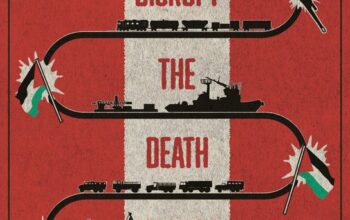By Iyad O. Aljaber
Integralism is a term with different meanings and dimensions. In English, it is used to describe a form of very conservative nationalism where the idea of the national identity takes on a sort of religious colour. Integralism is very linked with authoritarian ideologies.
Our goal with this article is to analyze “integralism” in three dimensions. In the first part, we are going to explore the term and establish which are the different kinds of integralism within the History and the present. The second part is related to the meaning of “integralism” associated to the so-called Muslim radical speech. Finally, the third point will discuss the position of IDare organisation around this topic.
We are going to use the term “integralism” instead of “integrism” because it is better etymologically. Our methodology is focused on the analysis of the narrative and the terminology, more than the study of socio-economic dimensions. Also, our intention is to make it clear from the beginning that we are not going to talk about “Islamic” radical speech or “Islamic” integralism. Instead, we will use “Muslim” integralism, because under the Islamic point of view those radicals are out of Islam for what they say and what they do. This is explained by the concept “خوارج” (khauāraŷ) which means that they are out of the Islamic doctrine. It means that many of precepts based in an extremist speech are contradictory with teachings from the Prophet and the Qur’ān. There is not “orthodoxy” in Islam as in Catholicism, which is why we cannot talk about Islam as a homogeneous concept.
Origin, History and present of “integralism”:
As many terms referred to society, “integralism” was born in the 20th century in the European context in France. It was associated with an anti-pluralist trend in Catholicism that sought to assert a catholic underpinning to all social and political action and to minimize any competing ideological actors. French integralists during the papacy of Pope Pius X (1903-14) called themselves “Catholiques intégraux” (Catholic integrists) from which the word intégrisme was derived which according to some scholars, would more appropriately give intégralisme . Many of the self-described integralist movements do hearken back to Franco in Spain and other fascist of national socialist type movements. Despite that the context in which was originally coined this term is Catholic, nowadays this kind of integralism is less used than Muslim integralism or Protestant fundamentalism.
Etymologically, as C. van der Krogt points out, “integralism” means to maintain the integrity or wholeness of a tradition and it is completely different to “fundamentalism”. The idea was to maintain the Catholic tradition in opposition to the Protestant fundamentalism that was originated as a defense to the most essential doctrines of the Christian faith . The importance of integralism is related to its role towards society, that is to say, for the ordering of society. According to some scholars, the integralism is “the belief that the world is to take shape only under the direct or indirect action of the [Catholic] Church” . In the year 1907 the Pope Pius X condemned the reinterpretation of Philosophy, History and the Scripture under the critical methods pioneered by some Protestant scholars. This papal censure was the beginning of an out-and-out witch-hunt of every co-religious that could seem to adopt liberalist or modernist principles. The new political, social and intellectual trends seemed as a threat for the integrity of Catholicism and the influence of the Church. It is important to highlight that the principal interest of these integralists groups was to maintain their influence and their power, so the political dimension is extremely significant.
Some of the characteristics of Catholic integralism and Protestant fundamentalism; are the rationalistic or literalistic application of propositions from authoritative texts and the rejection of a subjective reinterpretations of Christin revelations. Also, they claimed affinity for conservative or even reactionary politics and for the preservation of traditional Christian ethical values. We can find in addition apocalypticism among both fundamentalists and integralists, that is to say a special belief in the End of the Times following specified and obscure texts from the Scriptures, as St. John’s Gospel.
We have just situated in the History the rising of this concept, integralism, imbued in some characteristics that even today can be appreciated in other movements apart from Catholicism. We have to make it clear that “integralism” is a concept that was born in a concrete moment and with this concrete Catholic radical doctrine behind, but some of the approaches to the Scriptures, Philosophy and History enable the use of this term referred to other religions, as Islam or Judaism. We found the same with “fundamentalism”. The origin was linked with a way of seeing Protestantism, but finally the term was extrapolated.
Muslim Integralism:
What is called by media “Islamic integralism” – a term that we prefer to change to “Muslim integralism” as we explained at the beginning – is the extrapolation of the Catholic integralism to define the Wahabi or Salafi approach to Qur’an and Sunna. This term is used by those who find similarities with those interpretations of the Scriptures and History. Both “integralism” and “fundamentalism” notions have pejorative connotations boosted by the Western media.
We have to point out that in the case of the so-called Muslim extremism is used “integralism” as well as “fundamentalism” indistinctly. Instead of creating a term only for this ideology, or talk of Wahabism or Salafism, the western scholars and media preferred using those terms because they were referred to – apparently – similar phenomena, as a “western precedent” that adapts to this new reality by putting the label “Islamic” before. Bernard Lewis used that term to refer to the decline of what he called “Islamic civilization”. “Fundamentalism” whereupon became popular in Western press from the 1980s until now when they wanted to refer to “radicalism” based on religious beliefs.
Muslim integralism is called also fundamentalism because it assumes the come back to a Golden Age of Muslim power and maintain the integrity of “the faith”. A significant nuance that media usually forgets is that their efforts to maintain purity and integrity are aimed to their own interpretation of Islam, what they consider Islam, that is really not in the nature of the rest of Muslims. We find this distinction from the inner Muslim thinking, because those “integrists” are not considered as Muslims to the people who do not practice their doctrine. What we mean is that if a believer of Islam does not believe in the Wahabi interpretation, for a Wahabi believer it is going to be a kāfir (كافر) even if that person believes in Allāh or reads the Qur‘ān al-Karīm. And this is going to be worse than if that person was Christian or Jewish, because the consideration of kāfir means that one knows the Truth but refuses to live under its guidance. The radicals claim ownership of the Islamic tradition asserting the veracity of their interpretation of the Qur’an and its application.
We have talked about the religious dimension of “integralism” and “fundamentalism” but we need to analyze the political dimension, which is one of the basis and the reason which explains that today’s society is so concerned about these terms. Some scholars define Muslim integralism as “a vision of the world order based on politicized religion, a movement that contains a branch committed to sacral violence” based on a “tradition that is a distortion of Islamic history”. Using the expression created by the notorious historian E. Hobsbawn, what Muslim “integralism” or “fundamentalism” defends is the invention of tradition in order to legitimize its own totalitarian ideology. The year 1979 is especially considerable in the History of this phenomenon because of the events that took place in what geographically is known as Middle East. In 1979 was the triumph of the “Islamic Revolution” lead by Ayatollah Khomeini in Iran. Some scholars defend that as a reaction to this circumstance, in Saudi Arabia the Great Mosque of Mecca was taken by Juhayman Al-Oteybi between 20th of November and 4th of December. Also, the USSR occupation of Afghanistan started in that moment until 1989. As a result of the conflict in Afghanistan, diverse volunteers known as muŷāhidīn that U.S. helped to finance went there to fight the Russian army. Finally, the USSR retired from there and those volunteers went back to their origin countries (plenty of them from Saudi Arabia), where they were received as heroes.
They were completely imbued by a fanatic point of view, fed by diverse Salafist scholars’ writings. The European colonial rule over Muslim societies during the nineteenth and twentieth centuries caused many Muslims to seriously contemplate the nature of Islam, the reasons for Muslim political decline and how changes could be made to reserve the decline. Probably that is the reason why within the Muslim Integrism the longing of establishing a Caliphate (as we can verify nowadays across Daesh’s pretentious) is very strong, because it is the way to perpetuate a centralized order focused on a religion characterized by the absence of an institutional hierarchy. The caliphate could represent the political basis needed on which to assure the rigorous compliance of shar‘īa, ideal that is threatened by any other governmental system. Some of the conflicts that have taken part in Middle East (Iraq, Syria…) have the same ideological root: the feeling of losing, the extreme violence and the exaltation of faith, that promotes the construction of a sociocultural system based only on a radical interpretation of religion.
Something key about these kind of terms (integralism, fundamentalism…) is the smear of the ideology that pretends to be represented by them. When media talks about Muslim Integralism they generally identify Islam with barbarians. The definition comes always from one part of the global society (in this case, Western countries) with an intention behind, always. Under European and U.S. media’s point of view, the integralists are those exalted who pretends the complete destruction of the West. Those who rejects “true” values – as “democracy” and “freedom”-, so they are not able to tolerate the life in society. This is an excuse to develop islamophobic arguments which results are as dangerous as the religious radical speech.
Finally, we have to make clear that in questions of transfer of knowledge, there are a number of problems around those who reject the pass of the time and the current technical system evolved. The term “integralism” suits in this kind of groups, no matter the religion or denomination, that possess a conception about the world static and closed – at least in theory – to any change coming from outside
Dare and the “alternativist” way of thinking
The creation of a counter-narrative must be able to cover most of the many dimensions of ontological violent extremism: political, historical, socio-psychological, theological and instrumental. From 1960s empirical data have shown that it is needed a credible ‘messenger’ behind this counter-narrative to ensure its success. IDare wants to set itself up as a credible provider to alternative narratives to violent extremism. We understand “integralism” and “fundamentalism” as a part of this violent extremism, not only the one related to Muslims, but also to the hate speech that, for example, defends the expulsion of the refugees or the consideration that all Muslims are terrorists.
About the Muslim integralism or fundamentalism in Jordan, IDare acts at the prevention level focused on youth. Upcoming generations are active subjects, protagonists of a future change, which is why this organization has the approach of targeting youth. Extremists groups use Internet as a tool for recruitment, indoctrination and training of radicalized individuals. IDare works on the prevention level which functions in this field, so the biggest efforts of the organization are focused on mentalities, attitudes and values.
There are three pillars for counter-narrative. The first one is the comprehensiveness, based on a message depth and multi-layer. Then we have to make clear the background and credibility of the messenger. Finally, make the message visible by promotion and propagation. I Dare is working on these three bases in many ways, through different projects as ARTicipate (participation through Arts), Countering Online Hate Speech, Structuring Dialogue at Jordan’s level, and Alternativism. So that, the organization tries to reach different dimensions of countering violent extremism within the society (Jordan as well as Arabic language readers) with the intention of creating an identity based on respect, pluralism, and belonging to a society that allows the individual to feel complete and to avoid radicalization.
One of the strongest areas in which IDare is working on is researching to know more about the persona of youth joining violent extremism and identifying the proper ways to implement countering initiatives. We are still questioning: what are the main decisions that young people take prior to joining extremism. So far, it is clear for us that radicalization might be viewed as a set of diverse processes, not only one cause and one profile. The definition of that profile or model here in Jordan (if it exists) for the sake of prevention is our current key concern.
Iyad O. Aljaber
Note: this article is published at https://educationaltoolsportal.eu.



